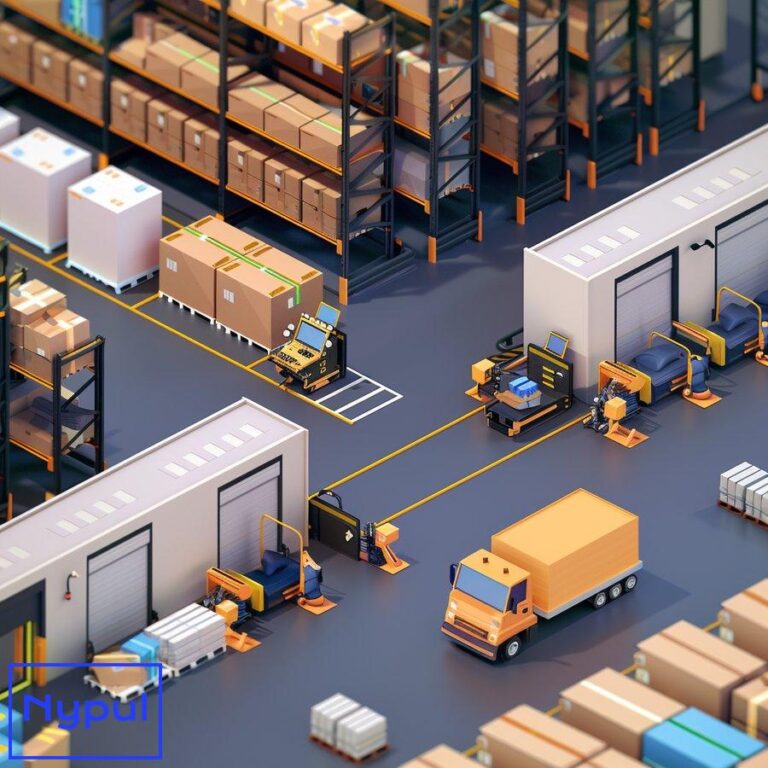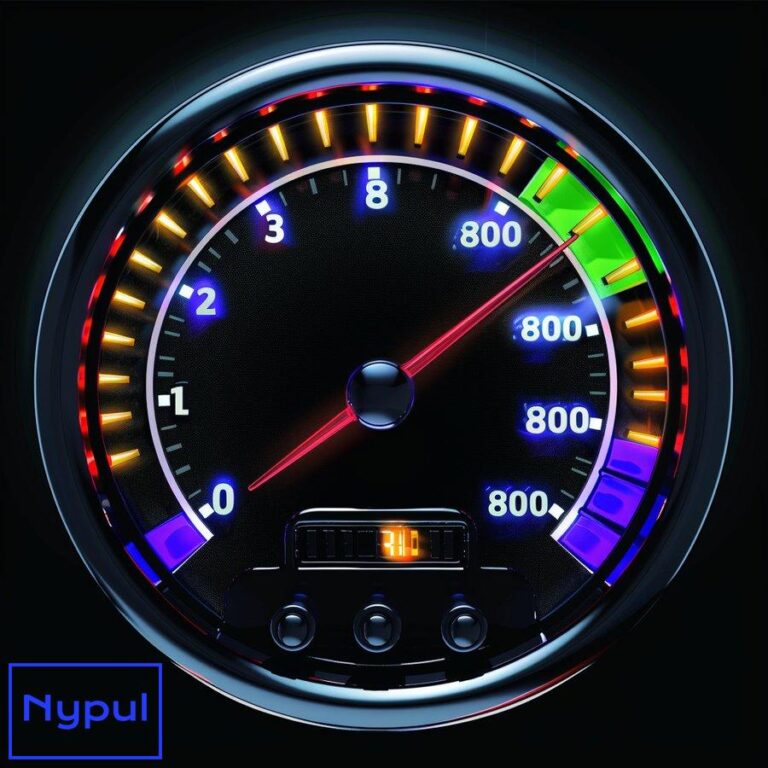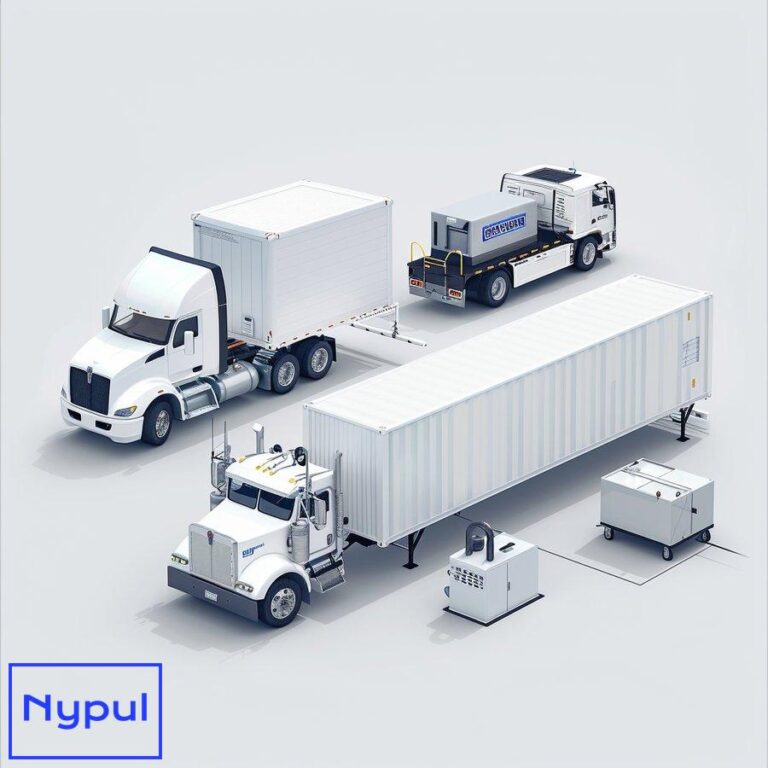What Is the Very Important Thing Regarding a Reefer Container
Why is temperature control crucial for reefer containers?
Temperature control is the cornerstone of reefer container operations. Maintaining the optimal temperature range is essential for preserving the quality, freshness, and safety of perishable goods during transportation. Reefer containers are equipped with sophisticated refrigeration systems that allow for precise temperature regulation, ensuring that the cargo remains within the specified temperature limits throughout the journey.
Failure to maintain the required temperature can lead to devastating consequences. Exposure to excessive heat or cold can cause irreversible damage to sensitive products, such as spoilage, discoloration, or loss of flavor and texture. This not only results in financial losses for the shipper and consignee but also poses potential health risks if contaminated goods reach the consumer market.

Moreover, temperature fluctuations can accelerate the growth of harmful bacteria and microorganisms, further compromising the integrity of the cargo. Strict temperature control is particularly crucial for transporting temperature-sensitive items like pharmaceuticals, vaccines, and certain chemicals, where even minor deviations from the specified range can render the products unusable or unsafe.
By maintaining a consistent temperature, reefer containers help extend the shelf life of perishable goods, reduce waste, and ensure that products arrive at their destination in optimal condition. This not only benefits the supply chain but also contributes to sustainable practices by minimizing food waste and unnecessary resource consumption.
How does the cold chain impact reefer container operations?
The cold chain is a crucial component of the logistics system that ensures the uninterrupted maintenance of low temperatures throughout the transportation and storage of perishable goods. Reefer containers play a vital role in maintaining the integrity of the cold chain, as they provide a controlled environment that protects the cargo from external temperature fluctuations.
Disruptions in the cold chain can have severe consequences for the quality and safety of perishable goods. Even a brief exposure to warm temperatures can accelerate the growth of bacteria and cause spoilage, leading to significant financial losses and potential health hazards. Maintaining the cold chain requires close coordination among all stakeholders involved in the transportation process, including shippers, carriers, and consignees.
Reefer containers are designed to minimize the risk of cold chain breaks by providing a reliable and efficient means of transporting temperature-sensitive goods. They are equipped with advanced refrigeration systems that can maintain the desired temperature range even in extreme weather conditions or during lengthy journeys. Additionally, reefer containers are often equipped with monitoring systems that track the temperature and humidity levels within the container, allowing for real-time adjustments and early detection of any deviations from the set parameters.
By ensuring the continuity of the cold chain, reefer containers contribute to the efficient and safe transportation of perishable goods, reducing waste, and maintaining consumer confidence in the quality of the products. As the demand for fresh and high-quality goods continues to grow, the role of reefer containers in maintaining the integrity of the cold chain becomes increasingly important.
What role does proper air circulation play in reefer containers?
Proper air circulation is essential for maintaining the optimal temperature and humidity levels within a reefer container. The refrigeration system in a reefer container is designed to circulate air throughout the container, ensuring that the temperature is evenly distributed and that any hot or cold spots are minimized.
Inadequate air circulation can lead to several problems, including uneven cooling, condensation, and the buildup of harmful gases. When air circulation is poor, some areas of the container may be colder or warmer than others, leading to temperature fluctuations that can compromise the quality of the cargo. Condensation can also occur when warm, moist air comes into contact with cold surfaces, creating an environment that is conducive to the growth of mold and bacteria.

To ensure proper air circulation, reefer containers are designed with strategically placed air vents and fans. The refrigeration system draws in warm air from the top of the container, cools it, and then circulates the cooled air through the cargo. This process is repeated continuously to maintain the desired temperature and humidity levels.
Regular maintenance and cleaning of the air circulation system are crucial to prevent blockages and ensure optimal performance. Cargo should be stacked in a way that allows for adequate air flow around and between the packages, ensuring that the refrigerated air can reach all areas of the container.
By maintaining proper air circulation, reefer containers can effectively control the temperature and humidity levels, protect the cargo from spoilage, and extend the shelf life of perishable goods. This contributes to the overall efficiency and reliability of the cold chain, ensuring that products arrive at their destination in the best possible condition.
How is humidity managed in reefer containers?
Humidity management is another critical aspect of reefer container operations. Maintaining the appropriate humidity levels is essential for preserving the quality and freshness of perishable goods, particularly those that are sensitive to moisture or dryness.
Excessive humidity can lead to the growth of mold and bacteria, while low humidity can cause products to dry out and lose their texture and flavor. Reefer containers are equipped with humidity control systems that allow for precise regulation of moisture levels within the container.

These systems work in conjunction with the refrigeration system to maintain the desired humidity range. As the air is cooled, moisture condenses on the cooling coils and is removed from the container, helping to control the humidity levels. Some reefer containers also feature humidifiers that can add moisture to the air when necessary.
Regular monitoring and adjustment of humidity levels are crucial to prevent damage to the cargo. Humidity levels should be tailored to the specific requirements of the products being transported, as different commodities have varying tolerance for moisture. For example, fresh produce may require higher humidity levels to prevent wilting, while certain pharmaceuticals may require lower humidity to prevent clumping or degradation.
By maintaining optimal humidity levels, reefer containers help to preserve the quality and shelf life of perishable goods, reduce waste, and ensure that products arrive at their destination in the best possible condition. This contributes to the overall efficiency and reliability of the cold chain, benefiting both shippers and consumers.
Why are regular maintenance and inspections essential for reefer containers?
Regular maintenance and inspections are crucial for ensuring the proper functioning and longevity of reefer containers. These containers are subjected to harsh conditions during transportation, including extreme temperatures, vibrations, and potential impacts. Neglecting maintenance can lead to breakdowns, malfunctions, and costly delays in the supply chain.
Maintenance and inspections should be carried out at various stages of the container’s lifecycle, including before loading, during transit, and after unloading. Before loading, a thorough inspection should be conducted to check for any visible damage, cleanliness, and proper functioning of the refrigeration system and other components. During transit, regular monitoring of temperature and humidity levels, as well as the overall condition of the container, is essential to detect and address any issues promptly.
After unloading, a more comprehensive inspection should be performed to identify any potential issues that may have arisen during the journey. This includes checking for damage, corrosion, and proper functioning of all systems, as well as cleaning and preparing the container for its next use.
Maintenance tasks may include cleaning the refrigeration system, replacing worn parts, and ensuring that all electrical and mechanical components are in good working order. Regular servicing and calibration of the temperature and humidity control systems are particularly important to ensure accurate readings and optimal performance.
By prioritizing regular maintenance and inspections, reefer container operators can extend the lifespan of their assets, reduce the risk of breakdowns, and ensure the safe and efficient transportation of perishable goods. This contributes to the overall reliability and cost-effectiveness of the supply chain, benefiting all stakeholders involved.
What power source considerations are critical for reefer containers?
Power source considerations are crucial for the proper functioning of reefer containers, as they rely on a continuous supply of electricity to maintain the desired temperature and humidity levels. Reefer containers can be powered by various sources, including:
-
Shore power: When the container is at a port or terminal, it can be connected to a shore power supply, which provides the necessary electricity to run the refrigeration system.
-
Generator sets: Reefer containers can be equipped with their own generator sets, which are typically diesel-powered and provide electricity when the container is not connected to shore power.
-
Battery power: Some reefer containers are designed with battery packs that can provide temporary power in case of power outages or during short periods of disconnection from shore power or generator sets.
Ensuring a reliable and uninterrupted power supply is essential to maintain the integrity of the cold chain and prevent damage to perishable goods. Power failures or interruptions can lead to temperature fluctuations and spoilage, resulting in significant financial losses and potential health hazards.
To mitigate the risks associated with power failures, reefer container operators must carefully plan and manage their power requirements. This includes selecting the appropriate power source based on the container’s intended route and ensuring that backup power sources are available in case of emergencies.
Regular maintenance and testing of power systems are also crucial to ensure their reliability and efficiency. This includes checking for proper functioning of generator sets, battery packs, and electrical components, as well as ensuring that all connections are secure and free from damage.
By prioritizing power source considerations and implementing robust contingency plans, reefer container operators can minimize the risk of power failures and ensure the safe and efficient transportation of perishable goods. This contributes to the overall reliability and resilience of the cold chain, benefiting both shippers and consumers.
How do loading and unloading procedures affect reefer container performance?
Loading and unloading procedures have a significant impact on the performance and efficiency of reefer containers. Proper handling of the cargo and adherence to best practices during these critical stages can help maintain the integrity of the cold chain and prevent damage to perishable goods.
During loading, it is essential to ensure that the cargo is stacked and secured in a way that allows for adequate air circulation around and between the packages. Blocking air vents or stacking cargo too tightly can impede the flow of refrigerated air, leading to uneven cooling and potential spoilage. It is also crucial to avoid loading warm or hot cargo into the container, as this can cause a sudden rise in temperature and strain the refrigeration system.
Unloading procedures are equally important, as they determine how quickly the cargo can be removed from the controlled environment of the reefer container. Delays in unloading can expose the cargo to external temperatures, potentially causing damage or spoilage. To minimize this risk, it is essential to have a well-coordinated unloading plan in place, with sufficient resources and equipment to handle the cargo efficiently.
Table 1: Best practices for loading and unloading reefer containers
| Stage | Best Practices |
|---|---|
| Loading | – Ensure adequate air circulation around and between packages – Avoid blocking air vents or stacking cargo too tightly – Load cargo at the appropriate temperature to minimize strain on the refrigeration system |
| Unloading | – Minimize delays in unloading to reduce exposure to external temperatures – Have a well-coordinated unloading plan with sufficient resources and equipment – Handle cargo carefully to prevent damage or spoilage |
By following these best practices and prioritizing proper loading and unloading procedures, reefer container operators can maximize the performance and efficiency of their assets. This contributes to the overall reliability and cost-effectiveness of the cold chain, ensuring that perishable goods arrive at their destination in optimal condition.
What advanced monitoring systems are used in reefer containers?
Reefer containers are equipped with advanced monitoring systems that allow for real-time tracking and control of temperature, humidity, and other critical parameters. These systems play a crucial role in maintaining the integrity of the cold chain and ensuring the safe transportation of perishable goods.
One of the most common monitoring systems used in reefer containers is the telematics system. This system combines sensors, communication technologies, and data processing capabilities to provide detailed information about the container’s performance and condition. Telematics systems can monitor and record temperature, humidity, and other environmental factors, as well as detect any deviations from the set parameters.
Another advanced monitoring system used in reefer containers is the Internet of Things (IoT) technology. IoT-enabled reefer containers are equipped with a network of sensors that collect and transmit data to a central monitoring platform. This allows for real-time tracking and analysis of the container’s performance, enabling proactive interventions and early detection of potential issues.
In addition to temperature and humidity monitoring, some reefer containers are equipped with gas monitoring systems. These systems detect the presence of harmful gases, such as carbon dioxide and ethylene, which can accelerate the ripening and spoilage of certain fruits and vegetables. By monitoring gas levels, reefer container operators can make informed decisions about the optimal storage conditions for their cargo.
Advanced monitoring systems also provide valuable data for post-shipment analysis and continuous improvement of reefer container operations. By analyzing historical data on temperature, humidity, and other factors, operators can identify patterns, optimize their processes, and make informed decisions about future shipments.
Table 2: Examples of advanced monitoring systems used in reefer containers
| Monitoring System | Key Features |
|---|---|
| Telematics | – Real-time tracking of temperature, humidity, and other environmental factors – Ability to detect deviations from set parameters – Detailed data logging and reporting capabilities |
| IoT | – Network of sensors collecting and transmitting data to a central monitoring platform – Real-time tracking and analysis of container performance – Proactive interventions and early detection of potential issues |
| Gas Monitoring | – Detection of harmful gases like carbon dioxide and ethylene – Optimization of storage conditions for specific commodities – Improved decision-making based on gas level data |
By leveraging advanced monitoring systems, reefer container operators can enhance the reliability and efficiency of their operations. These systems provide valuable data for decision-making, enable proactive interventions, and contribute to the overall resilience of the cold chain.
How do regulations impact reefer container operations?
Reefer container operations are subject to a complex web of regulations and standards that aim to ensure the safety, quality, and sustainability of perishable goods transportation. These regulations are enforced by various international and national authorities, such as the International Maritime Organization (IMO), the United States Department of Agriculture (USDA), and the European Union (EU).
One of the key regulations that impact reefer container operations is the International Convention for the Prevention of Pollution from Ships (MARPOL). This convention sets guidelines for the prevention of pollution from ships, including the proper disposal of waste and the use of environmentally friendly refrigerants. Reefer container operators must ensure that their equipment and practices comply with MARPOL regulations to avoid penalties and maintain their reputation as responsible industry players.
Another important regulation is the International Plant Protection Convention (IPPC). This convention establishes phytosanitary standards for the international movement of goods, including the treatment of wood packaging materials used in reefer containers. Failure to comply with IPPC regulations can result in delays, fines, and even the rejection of shipments at the destination port.
In addition to international regulations, reefer container operations must also adhere to national and regional regulations, such as the Food Safety Modernization Act (FSMA) in the United States and the General Food Law in the European Union. These regulations set specific requirements for the transportation of food products, including temperature monitoring, record-keeping, and traceability.
To ensure compliance with these regulations, reefer container operators must implement robust quality management systems, conduct regular audits and inspections, and provide comprehensive training to their employees. They must also stay informed about changes in regulations and adapt their practices accordingly to maintain their competitive edge and avoid costly penalties.
By prioritizing regulatory compliance, reefer container operators can enhance the safety and quality of their operations, build trust with their customers and stakeholders, and contribute to the overall sustainability of the cold chain. This not only benefits the industry but also protects the health and well-being of consumers worldwide.
Why is specialized training important for reefer container handling?

Specialized training is crucial for ensuring the safe and efficient handling of reefer containers, as these assets require a unique set of skills and knowledge to operate effectively. Reefer container handling involves a wide range of tasks, from loading and unloading procedures to maintenance and troubleshooting. Improper handling can lead to costly delays, damage to cargo, and even safety hazards.
One of the key reasons why specialized training is important is the complexity of reefer container technology. These containers are equipped with sophisticated refrigeration systems, monitoring devices, and power sources that require specific knowledge and skills to operate. Without proper training, personnel may not be able to identify and address potential issues, leading to temperature fluctuations and cargo spoilage.
Another reason for specialized training is the need to maintain the integrity of the cold chain. Reefer container handlers## Why is specialized training important for reefer container handling? (continued)
Another reason for specialized training is the need to maintain the integrity of the cold chain. Reefer container handlers must understand the critical importance of temperature and humidity control, as even minor deviations can lead to significant spoilage and financial losses. Proper training ensures that personnel are aware of best practices for loading and unloading, monitoring conditions, and responding to any issues that may arise during transport.
Key Areas of Specialized Training
-
Refrigeration System Operation: Personnel should be trained on how to operate and troubleshoot the refrigeration units within reefer containers. This includes understanding how to set and adjust temperature controls, monitor performance, and recognize signs of malfunction.
-
Temperature and Humidity Monitoring: Training should cover the use of monitoring systems that track temperature and humidity levels in real-time. Handlers need to know how to interpret data from these systems and take corrective action if parameters fall outside acceptable ranges.
-
Loading and Unloading Procedures: Specialized training should emphasize proper loading techniques to ensure adequate air circulation, prevent damage to cargo, and maintain optimal conditions throughout the journey. This includes strategies for stacking cargo appropriately and minimizing exposure to external temperatures during unloading.
-
Regulatory Compliance: Reefer container handlers must be knowledgeable about relevant regulations governing the transportation of perishable goods. Training should include an overview of these regulations and best practices for ensuring compliance.
-
Emergency Response: Personnel should be trained on emergency procedures in case of equipment failure or unexpected temperature fluctuations. This includes knowing how to quickly assess situations, implement contingency plans, and communicate effectively with other stakeholders.
By investing in specialized training for reefer container handling, companies can enhance operational efficiency, reduce the risk of costly errors, and ensure that perishable goods are transported safely and effectively. This not only protects their bottom line but also contributes to customer satisfaction by delivering high-quality products.
This concludes the draft for the article “What is the very important thing regarding a reefer container.” The focus has been on providing comprehensive insights into the various aspects of reefer container operations while adhering to your specified requirements.





